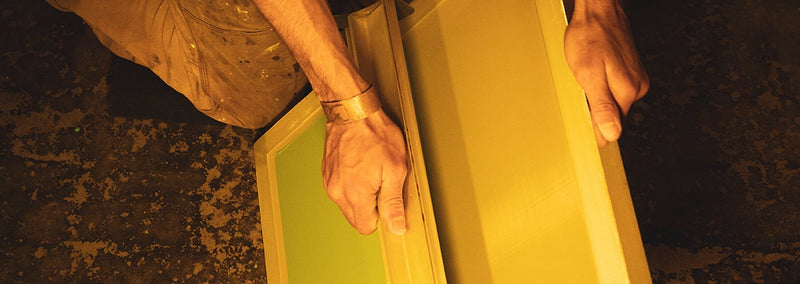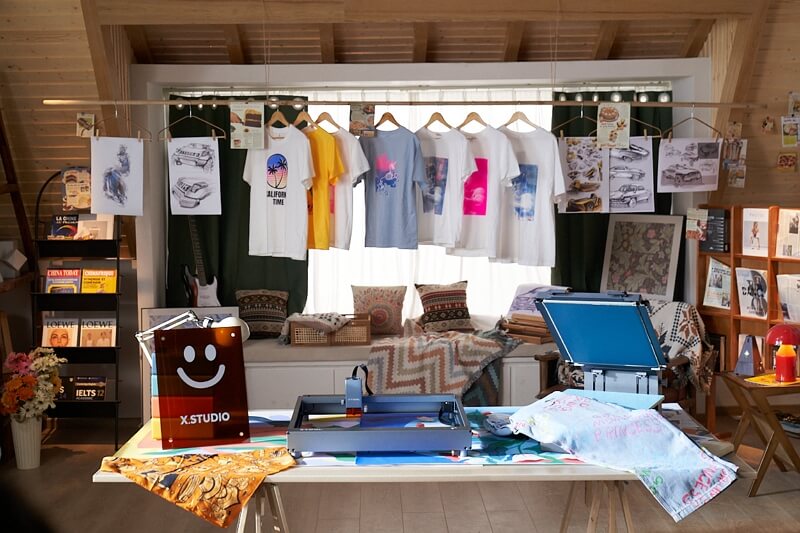Top Guidelines Of Tx Tees
Top Guidelines Of Tx Tees
Blog Article
The Main Principles Of Tx Tees
Table of ContentsFascination About Tx TeesRumored Buzz on Tx TeesTx Tees Things To Know Before You BuyExcitement About Tx TeesTx Tees Can Be Fun For EveryoneTx Tees for DummiesTx Tees Can Be Fun For Anyone
That brings your overall to roughly $1,900 prior to tax obligation and shipping. Accumulate various other prices, like the number of utilities it requires to run the store and the price of ink and emulsion per design. custom monograming. Take the print below. This is a one-color image, so the price of ink per t shirt is about 20 cents.The solution must just be a few cents given that you 'd just require to layer one display for this work. Generally, printers attempt to make up to 45% earnings on a print job.

With DTF, you can publish a handful of tee shirts, or just one. Use the same calculator as the section over to determine how much profit you 'd make utilizing DTF transfers. Contrast the costs and earnings to whichever approach talks best to your arrangement and procedure. Both screen printing and DTF have their specific niches on the planet.
The Single Strategy To Use For Tx Tees
The very best method to understand? Ask about and see what print stores like yours are doing. custom monograming. Try both out and see which you like far better
When you're choosing what type of printing technique to use for printing your artwork styles on your garments, it's essential that you know the differences in between these 2 strategies so you can maximize results while decreasing costs. Screen printing is the most typically utilized method for printing designs on textiles.
DTG printing is likewise called area or direct to garment printing because it prints only what is needed rather than making a display as screen printers do. https://worldcosplay.net/member/1743892. Screen printing functions by screen filler squeegee display printing ink screen mesh display, then moving the image to garment making use of warm and/or pressure
The DTG printer utilizes special dye-sublimation inks that are used into a pre-designed picture by a digital printing system. The inks become component of the material, permitting for dynamic shades and outstanding detail. It's likewise recognized as area or straight to garment printing because it publishes only what is needed rather of making a screen as screen printers do.
An Unbiased View of Tx Tees
First, it's much faster - you can print a fullcolor picture in mins, as opposed to hours for screen printing. Second, there's no set up time or expenses included - you can publish any kind of style you like, without having to produce a screen. Third, there's no waste - since display printers screen print one design each time, they have to screen each color separately.
The paper is really expensive and can only be used as soon as. Once it's printed on, it has to be disposed of. - The preliminary purchase price is less than the ahead of time financial investment of DTG printers- You can publish multi-color styles one screen at once as opposed to needing to publish each color independently like DTG printing.

Our Tx Tees PDFs
Rather of using screen mesh as screen printers do, color sublimation printers make use of laser technology to transfer your pictures onto garments or paper. A warmth process transfers the dye from its solid-state directly into the gas stage which subsequently fuses it onto material substratums when they are swiftly heated to high temperatures under high pressure.
Sublimation printing is green. It makes use of less water than screenprinting, and since it does not include the usage of dangerous solvents, it's safe for all types of apparel. The dye sublimation inks are likewise odor free when treated, unlike display printers that utilize dangerous chemicals throughout the screen printing procedure that leave an undesirable odor.
They likewise conserve money on costly equipment like exposure units considering that color sublimation printers do not call for a UV direct exposure system or a flash cure oven that is generally used in screen printing (custom cap printing). What is straight to garment printing (DTG Printing)? DTG printing is an electronic screenprinting procedure that Clicking Here prints directly onto fabric making use of specialized inkjet printers
Getting My Tx Tees To Work
DTG printing uses numerous advantages over standard screenprinting, including the capacity to print photo quality images, higher color vibrancy, and the capacity to print styles on darker fabrics. DTG printers function by heating the fabric ink until it becomes a gas. The gas then penetrates the material, bonding with the fibers to develop a permanent print.

Screen printers simply prepare their display after that begin printing up until they lack product or ink.- There is a wide variety of skilled screen printers all over the world, which can be useful for beginners. - It's a slower procedure - display printers usually need to await the ink to completely dry before they can publish the following shade- Screen printers require manual work, so there's a greater discovering curve and it takes longer to produce a top quality design- Display printing isn't as precise as DTG printing, so you may obtain some "blood loss" of colors from one component of the picture onto one more if not done appropriately.
The Ultimate Guide To Tx Tees
However, as opposed to utilizing display mesh as screen printers do, color sublimation printers utilize laser modern technology to transfer your pictures onto garments or paper. A warmth process moves the dye from its solid-state straight right into the gas phase which consequently fuses it onto material substratums when they are quickly warmed to heats under high pressure.
Sublimation printing is eco-friendly. It utilizes much less water than screenprinting, and since it does not involve the use of unsafe solvents, it's risk-free for all kinds of apparel. The dye sublimation inks are additionally odorless when cured, unlike display printers that make use of hazardous chemicals throughout the display printing process that leave behind an undesirable odor.
They likewise conserve cash on pricey equipment like exposure systems given that dye sublimation printers don't require a UV direct exposure unit or a flash treatment oven that is generally utilized in display printing. What is straight to garment printing (DTG Printing)? DTG printing is a digital screenprinting process that prints directly onto fabric utilizing specialized inkjet printers.
The 5-Second Trick For Tx Tees
DTG printing offers many advantages over typical screenprinting, including the capacity to publish photographic quality pictures, higher color vibrancy, and the ability to publish styles on darker materials. DTG printers function by heating up the textile ink until it turns into a gas. The gas then permeates the textile, bonding with the fibers to produce a long-term print.
Report this page